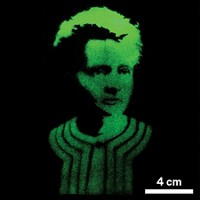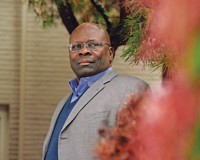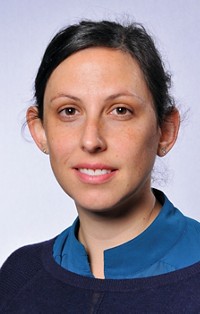Advertisement
Grab your lab coat. Let's get started
Welcome!
Welcome!
Create an account below to get 6 C&EN articles per month, receive newsletters and more - all free.
It seems this is your first time logging in online. Please enter the following information to continue.
As an ACS member you automatically get access to this site. All we need is few more details to create your reading experience.
Not you? Sign in with a different account.
Not you? Sign in with a different account.
ERROR 1
ERROR 1
ERROR 2
ERROR 2
ERROR 2
ERROR 2
ERROR 2
Password and Confirm password must match.
If you have an ACS member number, please enter it here so we can link this account to your membership. (optional)
ERROR 2
ACS values your privacy. By submitting your information, you are gaining access to C&EN and subscribing to our weekly newsletter. We use the information you provide to make your reading experience better, and we will never sell your data to third party members.
Synthesis
Movers And Shakers
Anthony J. Arduengo III
Inventor of stable N-heterocyclic carbenes reflects on the impact of his discovery 20 years later
by Stephen K. Ritter
October 15, 2012
| A version of this story appeared in
Volume 90, Issue 42
Anthony J. Arduengo III likes molecules that break the rules. The University of Alabama chemistry professor has spent his career creating compounds with abnormal valency and bonding arrangements leading to unusual molecular electronic properties. Although many chemists might not recognize Arduengo by name, they will recognize one of his milestone rule-breaking achievements: the discovery 20 years ago of the first isolable N-heterocyclic carbene, or NHC.
Arduengo was a researcher at DuPont when he made the cyclic diamine (an imidazole) bearing adamantyl substituents. In carbenes, the central carbon has a valency of two instead of the usual four, Arduengo explains. A lone pair of electrons fills one of the carbon’s orbitals, leaving one orbital empty.
Chemists once viewed carbenes as highly reactive, transient species that were important intermediates in some reactions, Arduengo says. Although predictions were made that the electron imbalance in carbenes could be stabilized with structural modifications, no one had been able to crystallize one and put it in a reagent bottle. He credits the research culture at DuPont for making it possible.
“We worked on applied projects, but we also were free to look for new ideas and concepts. This discovery-driven approach liberates you from the philosophical confines of what is conventionally known,” he says. “Within that culture, if you keep your ear to the rail and listen for research problems that come along, you can always be thinking about how you might provide a quick solution.”
Arduengo had been working on developing cross-linking catalysts used in paints and other polymer-based systems. Meanwhile, DuPont was trying to develop an environmentally friendly waterborne coating with low volatile organic compound emissions, he says. He recognized that the catalytic imidazole thiones he had been working on provided a solution.
It struck Arduengo that the carbene intermediates that captured sulfur to make the thiones had an unusual tolerance to moisture in the air and to a range of different types of substituent groups on the nitrogen atoms. “When you notice something like that in the lab, it tends to gnaw at you as to why,” Arduengo notes. “It finally dawned on me that these particular carbenes were really stable.” Although Arduengo’s DuPont managers thought he was chasing shadows trying to isolate a stable carbene, he gave it a shot anyway. He nailed it on his first try.
When news about Arduengo’s discovery spread, chemists quickly grouped NHCs with cyclopentadienes and phosphines as go-to ligands for transition-metal catalysts. They also found that NHCs function as metal-free organocatalysts. The carbenes now come in many varieties, and analogs have been made from elements all across the periodic table. They also have branched out from catalysis and into electronics and other applications.
Arduengo’s interest in tinkering with molecules comes honestly, he says. He has always had an interest in working with tools and doing mechanical work. When he was 16, for example, he teamed up with his father to build a car from miscellaneous parts. His fascination with cars continues. Now 60, he owns a yellow 2008 Lotus Elise. “Aside from really liking the car, I feel a kinship to it because it has a DuPont automotive waterborne coating,” Arduengo says. “It’s nice to be able to look at something and see reflected in it the chemistry you’ve worked on.”

Although he enjoyed working at DuPont, Arduengo sensed in the late 1990s that the firm’s research culture was shifting toward project-driven applied research, where success or failure depended more on whether something worked and less on fundamental discoveries like uncovering stable carbenes. He decided to change gears, and in 1999 he took a faculty position at Alabama. He also has a joint research appointment at the Technical University of Braunschweig, in Germany.
The transition to academia enabled Arduengo to continue discovery-driven applied research on carbenes, he says. Some of his latest work includes developing modified NHC ligands and using NHCs for alkyne metathesis reactions. But his penchant for tinkering with tools has led him in new directions.
One of his targets is developing NHC-based dyes to capture light in solar cells. He’s reluctant to share details pending patent protection, but his group’s chromophores absorb light from the infrared into the ultraviolet and convert light energy into electrical energy without the semiconductor layer that most solar cells require.
Arduengo says his foray into stable carbenes has been overwhelmingly gratifying to him as a scientist and educator. “I have had the opportunity to meet and interact with some of the world’s luminary scientific figures and help many hardworking young scientists in my group,” he says. “As a trumpet player, I can tell you that one’s musical performance improves with the quality of the musicians with whom you associate and perform. This intellectual concert enhancement holds true among chemists.”
He’s also thrilled that many chemists have picked up on and found success with NHCs. “It’s invigorating to know you’ve made a contribution that will leave a mark,” Arduengo says. “As a scientist, that is something we all hope for I think, to push the science forward and give others tools to work with so they can go even further.”







Join the conversation
Contact the reporter
Submit a Letter to the Editor for publication
Engage with us on Twitter